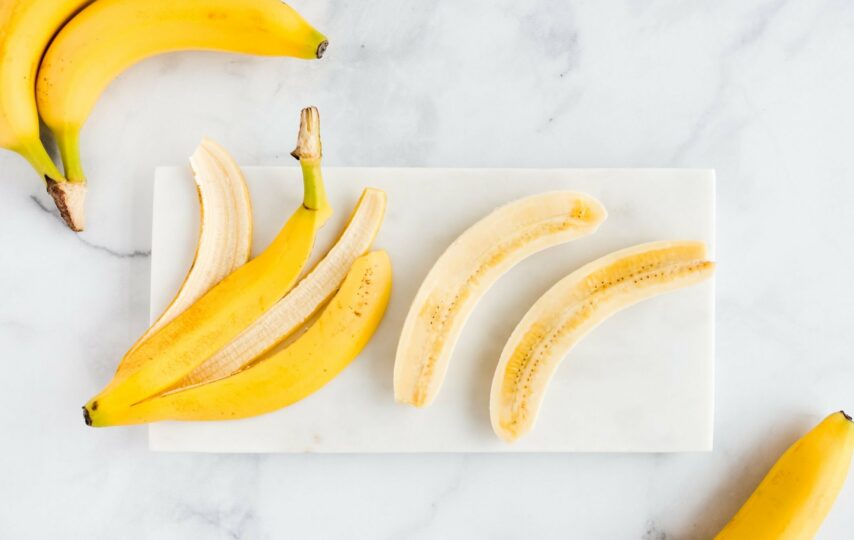When you have diabetes, you need to be highly aware of your blood sugar levels and the effect of food on it. However, several rumours often mislead people with diabetes and can lead to other issues. One such rumoured food is bananas which is a very versatile fruit. We often come across the question – “Can Diabetic Patient Eat Bananas?” which is why we took it upon ourselves to answer it. Read on to know more and learn whether you can include it in your diet or not.
Nutrition Facts About Bananas
Bananas are rich in carbohydrates, which can cause a spike in blood sugar levels. It is often for this reason that people avoid including bananas in their prediabetes diet. One medium banana (weighing approximately 126 grams) contains about 29 grams of carbs in sugar (about 15 grams), starch, and fibre. Most of the carbs in bananas are simple, which can cause a higher rise in your blood sugar level.
However, a medium banana has about 3 grams of fibre and individuals with diabetes can benefit from dietary fibre. This is because fibre helps slow digestion and the absorption of carbs, which helps reduce overall blood sugar spikes. Moreover, bananas have a low to medium Glycemic Index (GI) score, meaning they can aid blood sugar management in people with diabetes. Thus, a definitive answer to – “Can Diabetic Patient Eat Banana” is yes! But one should always consume it in moderation.
Cooking and Preparation Guidelines
There are several processed banana products you can find in the market. However, some of these processed products are unfit for being included in your prediabetes diet. Dried banana chips on the shelves are often marketed as a healthy treat or snack. But some food manufacturers add sugars or syrups to enhance the flavour. These products will likely cause more blood sugar spikes than fresh bananas. Hence, we recommend that you read nutrition labels and avoid processed preparations with added sugars.
Ways to Include Banana in Your Prediabetes/Diabetes Diet
We have already answered the question – “Can Diabetic Patient Eat Banana,” but there are some ways to add the fruit to your diet without warranting a spike in blood sugar levels. Read on to know more about how to include bananas in your diet, even with diabetes!
Bananas with Other Ingredients
Frankly, all of us have heard that a balanced diet is a key to better overall health. So, why not include a rich source of fat and protein? These nutrients are slow to digest and can help reduce the impact of carbs on your blood sugar levels. A great option is a Greek Yogurt, which is loaded with proteins. You can also pair bananas with peanut butter, a source of protein and plant-based fats that promote heart health.
Control The Portions
Bananas are rich in sugars, but controlling the portions can help control the spike in your blood sugar levels. The recommended serving is just half of the fruit, which contains about 15 grams of carbohydrates. Cut the banana in two and cover the unused half in plastic wrap to avoid wasting it.
Choose Firm and Ripe Bananas
With the ripening of bananas, the resistant starch transforms into a faster-acting sugar. Thus, the softer and browner the peel, the higher the sugar content and increased blood sugar levels. We recommend you choose firm bananas for less impact on blood sugar while retrieving the other nutritional benefits like vitamins, minerals, and fibre.
Additional Diet and Safety Tips
You can easily sneak in some bananas for your meals and snacks, but there are many factors you should consider. Whether you’re considering bananas for a prediabetes diet or as a snack option after being diagnosed with diabetes, these diet and safety tips can help you manage your blood sugar levels more easily.
- Eat Smaller Bananas – A small banana (measuring approximately 6 and 7 inches) has about 23.07 grams of carbohydrates per serving, while a medium banana has about 35 grams of carbs.
- Track Your Overall Carb Intake – An individual’s activity level and dietary restrictions determine how many bananas they can consume daily. Ask your doctor to define your daily carb intake to ensure effective portion control. Track your overall carb, protein, and fibre intake regularly and follow all restrictions closely.
- Diabetes Meal Plan – Your diabetes meal plan will include fruits with natural sugars, but knowing how each of these affects your sugar levels is necessary. We recommend that you learn how to manage your blood sugar with the help of medications and insulin shots (if necessary).
Ultimate Takeaway
Bananas are a safe and nutritious fruit that one can easily include in a balanced diet. We recommend you eat it in moderation and reap its positives. Bananas are low in fat and sodium and a rich source of potassium and fibre. Moreover, the fruit is also rich in vitamin B6, vitamin C, magnesium, and manganese. It does not add many calories and can be the key to proper blood management.








